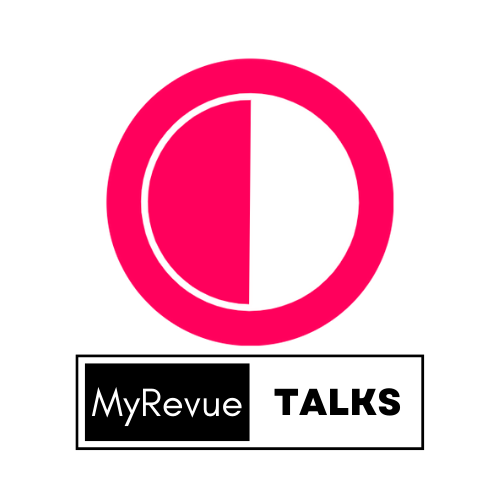UGC and its impact on brand customer journey mapping and optimization
UGC (User-Generated Content) has a significant impact on brand customer journey mapping and optimization.

Written by Shivangi
Updated on 13/07/2023
<p class="MsoNormal">UGC (User-Generated Content) has a significant impact on
brand customer journey mapping and optimization. Let's explore how UGC
influences these areas:<o:p></o:p></p><p class="MsoNormal"><br></p>
<p class="MsoNormal">Customer Journey Mapping: </p><p class="MsoNormal">a. Awareness Stage: UGC plays a
role in the awareness stage of the customer journey. Customers often encounter
UGC, such as reviews, social media posts, or testimonials, that provide them
with information about a brand or its offerings. Incorporating UGC into
customer journey mapping helps brands understand the touchpoints and sources of
information that customers encounter during their awareness stage.<o:p></o:p></p><p class="MsoNormal"><br></p>
<p class="MsoNormal">b. Consideration Stage: UGC can influence the consideration
stage of the customer journey. Customers rely on UGC to gather insights,
opinions, and experiences related to a brand's products or services. By
incorporating UGC into customer journey mapping, brands can identify the key
UGC sources and content types that shape customer consideration and
decision-making.<o:p></o:p></p><p class="MsoNormal"><br></p>
<p class="MsoNormal">c. Decision Stage: UGC serves as a valuable resource in the
decision-making stage of the customer journey. Customers actively seek
UGC-based reviews, ratings, and testimonials to validate their choice. By
mapping UGC-related touchpoints and content at this stage, brands can
understand how UGC impacts the final decision and optimize those touchpoints to
drive conversions.<o:p></o:p></p><p class="MsoNormal"><br></p>
<p class="MsoNormal">Customer Journey Optimization: </p><p class="MsoNormal">a. Content Personalization:
UGC allows brands to personalize content at various stages of the customer journey.
By leveraging UGC, brands can provide relevant and relatable content to
customers based on their preferences and behaviors. UGC-based personalization
optimizes the customer journey by delivering tailored content that enhances
engagement and drives conversions.<o:p></o:p></p><p class="MsoNormal"><br></p>
<p class="MsoNormal">b. Social Proof and Trust: UGC-based social proof
significantly influences the customer journey. When customers encounter
positive UGC, it builds trust and credibility, encouraging them to move forward
in their journey. By optimizing touchpoints with UGC-based social proof, brands
can reinforce trust and confidence, ultimately optimizing the customer journey.<o:p></o:p></p><p class="MsoNormal"><br></p>
<p class="MsoNormal">c. Customer Engagement and Participation: UGC-driven
customer engagement and participation optimize the customer journey. Brands can
encourage customers to create and share UGC, participate in UGC-based
campaigns, or provide feedback. By actively involving customers in UGC-related
activities, brands enhance customer engagement and participation, creating a
more interactive and optimized customer journey.<o:p></o:p></p><p class="MsoNormal"><br></p>
<p class="MsoNormal">d. Insights and Feedback Utilization: UGC provides valuable
insights and feedback throughout the customer journey. Brands can analyze
UGC-based feedback, reviews, and testimonials to identify pain points,
opportunities for improvement, and customer preferences. By utilizing UGC-based
insights, brands can optimize touchpoints, refine their offerings, and enhance
the overall customer journey experience.<o:p></o:p></p><p class="MsoNormal"><br></p>
<p class="MsoNormal">Post-Purchase Journey: a. UGC-based Reviews and Referrals:
UGC-based reviews and referrals impact the post-purchase journey. Positive
UGC-based reviews encourage repeat purchases and foster customer loyalty.
Brands can optimize the post-purchase journey by actively promoting and
leveraging UGC-based reviews and referrals, which contribute to customer
retention and advocacy.<o:p></o:p></p><p class="MsoNormal"><br></p>
<p class="MsoNormal">b. UGC-driven Customer Feedback and Support: UGC allows
brands to gather customer feedback and provide support during the post-purchase
journey. Brands can monitor UGC-based discussions, comments, and interactions
to identify customer concerns and address them promptly. UGC-driven customer
feedback and support optimize the post-purchase journey by ensuring a positive
and seamless customer experience.<o:p></o:p></p><p class="MsoNormal"><br></p>
<p class="MsoNormal">In summary, UGC has a significant impact on brand customer
journey mapping and optimization. UGC influences different stages of the
customer journey, including awareness, consideration, and decision-making. By
leveraging UGC, brands can personalize content, build social proof and trust,
enhance customer engagement and participation, and utilize insights for
optimization. UGC-driven reviews, referrals, and customer feedback contribute
to post-purchase journey optimization. By incorporating UGC into the customer
journey mapping process and leveraging its influence, brands can optimize touchpoints,
deliver a seamless customer experience, and drive customer satisfaction,
loyalty, and advocacy.<o:p></o:p></p>
<p class="MsoNormal"><o:p> </o:p></p>
